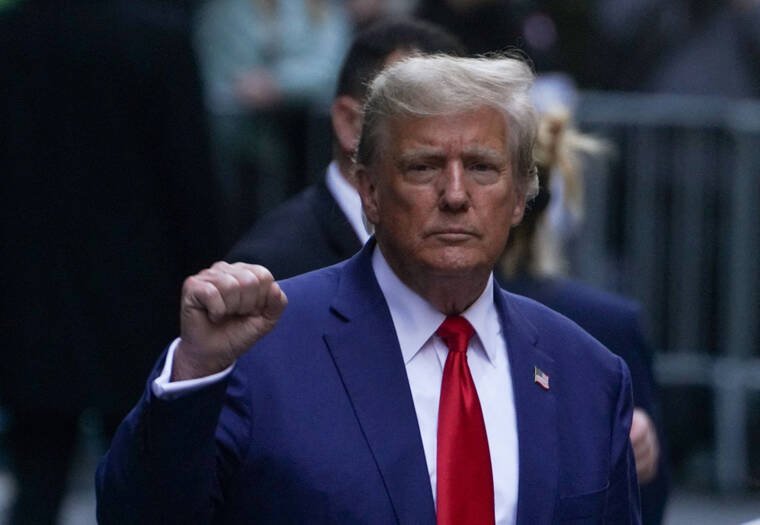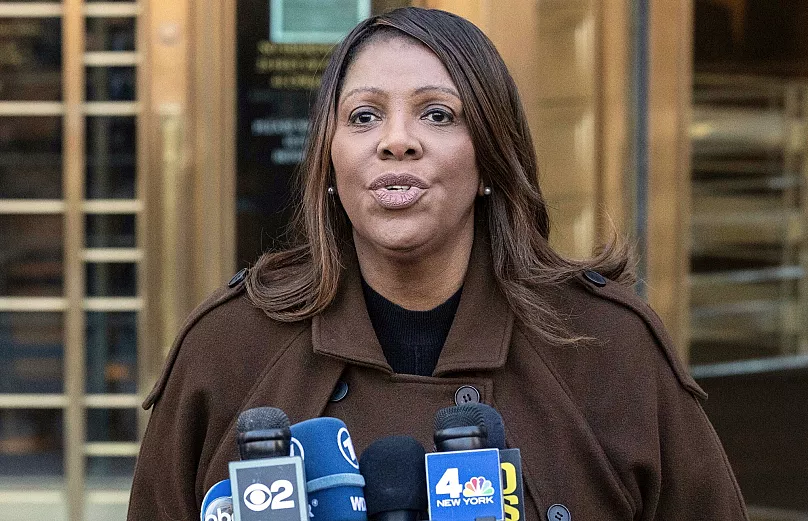Trump civil fraud penalty tossed by a New York appeals court in a dramatic ruling that changes the trajectory of one of the most high-profile legal battles involving the former president. The decision removes nearly half a billion dollars in financial penalties but still keeps the fraud finding intact. The ruling has sparked intense reactions from both Trump’s team and New York’s Attorney General, Letitia James, setting the stage for further legal and political clashes.
The Road to the Appeals Court
In February 2024, Judge Arthur Engoron of the New York Supreme Court issued a stunning ruling against Donald Trump, his sons, and executives of the Trump Organization. The court concluded that Trump had inflated the value of his assets to secure favorable loans and insurance deals. Engoron ordered Trump to pay about $354 million in penalties, which ballooned to more than $454 million after interest.
To keep the judgment from being enforced while an appeal was pending, Trump posted a $175 million bond. This temporarily paused the collection of the penalty, but the financial weight of the case hung over his businesses and political campaign throughout 2024 and into 2025.
The case gained national attention because of both its size and its timing. Trump was simultaneously running for president while defending himself in multiple criminal and civil proceedings. The civil fraud case, led by Attorney General Letitia James, became one of the largest corporate fraud judgments in U.S. history.
Appeals Court Decision: A Split Ruling
On August 21, 2025, a New York appellate panel delivered a surprising split ruling. While four of the five judges agreed that Trump had indeed engaged in fraud, they unanimously ruled that the penalty imposed was unconstitutionally excessive.
The court based its reasoning on the principle of proportionality, drawing from the Eighth Amendment’s protection against excessive fines. The panel noted that while fraudulent conduct had been proven, the nearly half-billion-dollar penalty far exceeded the financial harm alleged.

One judge went further, arguing that the entire case should have been dismissed, questioning whether the state’s intervention was necessary given that no lenders actually lost money. Although that view did not carry the majority, it underscored a growing debate over whether the case was politically charged.
The appeals court tossed the financial penalty, leaving Trump free of the massive payout. However, it did not overturn the fraud finding, meaning the label of corporate misconduct still officially applies to Trump and his organization.
What Was Overturned and What Remains
The appeals court ruling created a mixed outcome.
- Overturned: The $454 million financial penalty, including interest, is no longer enforceable. This removes the immediate threat of Trump’s businesses being drained of cash or forced to sell assets to cover the fine.
- Remains: The court affirmed the fraud finding itself. Trump and his company were still found to have exaggerated asset values. The injunctive measures imposed by the trial court were also left standing, though they remain limited while appeals continue.
This distinction matters because it shapes Trump’s public narrative. He claims total victory because the crushing fine was removed, while critics point out that he is still legally considered to have committed fraud.
Trump’s Response
Trump’s legal team and political allies immediately declared the ruling a major win. They argued that the appeals court had corrected an unfair overreach by the trial judge and had exposed what they view as a politically motivated attack by the New York Attorney General.
Trump himself called the decision proof that the case was a “witch hunt” designed to damage his political career. The removal of the penalty allows him to reassert financial stability at a time when he is simultaneously funding a presidential campaign.
For Trump, the ruling not only represents relief from financial jeopardy but also an opportunity to rally supporters with the claim that he defeated another attempt to bring him down through the courts.
Attorney General Letitia James’ Reaction
Attorney General Letitia James responded by emphasizing that the fraud finding still stands. She stated that her office remains committed to holding Trump accountable and announced plans to appeal the ruling to the New York Court of Appeals, the state’s highest court.

James’ office has consistently argued that Trump’s conduct undermined the integrity of financial markets, even if lenders were repaid. By inflating asset values, they claim, Trump gained an unfair advantage over honest businesses and misled regulators.
The Attorney General’s appeal will focus on restoring some form of financial accountability, though legal experts believe it will be difficult to reimpose a penalty of the same size.
Political and Legal Implications
The ruling has deep implications for both law and politics.
Legal Impact
The decision sets an important precedent for how far civil fraud penalties can go in New York. By striking down the penalty as excessive, the court has placed limits on the scope of financial punishments that can be imposed in cases where no direct losses are proven. This could affect future corporate fraud cases, narrowing the state’s ability to impose massive fines when the harm is considered indirect.
Political Impact
For Trump, the ruling provides ammunition to claim that he is being unfairly targeted. He can now argue that even when courts find against him, they reject extreme penalties. This narrative strengthens his campaign and helps him raise funds.
At the same time, critics emphasize that Trump was still found guilty of fraud. They argue that while the fine may have been too large, the misconduct remains serious and undermines his credibility as a businessman.
The political divide over the case mirrors the national polarization around Trump himself. Supporters see vindication; opponents see a dangerous precedent where fraud goes unpunished.
Broader Context of Trump’s Legal Battles
This case is just one of many Trump faces. Alongside the civil fraud ruling, Trump is fighting multiple criminal charges at both state and federal levels. These include election interference cases, classified documents handling, and other investigations.
The civil fraud case stood out because of its sheer financial scale. The prospect of nearly half a billion dollars in penalties threatened to destabilize Trump’s empire and campaign. By overturning the penalty, the court has eased that burden, though other legal risks remain significant.
It also raises questions about whether financial and legal systems are the right arenas to hold political figures accountable. Some argue that voters, not courts, should decide Trump’s fate, while others believe unchecked fraud must face legal consequences regardless of politics.
Looking Ahead
The next stage of the case will likely head to New York’s Court of Appeals. If the state’s highest court reinstates some form of penalty, the saga will continue to drag on. For now, however, Trump has secured a major win that strengthens his financial position and political narrative.
The decision also invites broader discussions about fairness, punishment, and the role of politics in high-profile legal battles. Whether Trump ultimately emerges vindicated or damaged may depend as much on public perception as on court rulings.
Conclusion
The Trump civil fraud penalty tossed by the New York appeals court represents one of the most significant legal rulings in Trump’s post-presidency years. By voiding the massive $454 million penalty, the court gave Trump a lifeline that bolsters both his business and political ambitions. Yet the fraud finding remains, keeping questions about his conduct alive.
This mixed outcome ensures the case will remain a focal point of legal, political, and public debate in the months ahead. As appeals continue and the 2025 political season intensifies, the story of Trump’s civil fraud case will continue to shape his legacy and influence the nation’s political landscape.
Do Follow USA Glory On Instagram
Read Next – Trump Patrols DC Streets with Police and Military Crackdown






